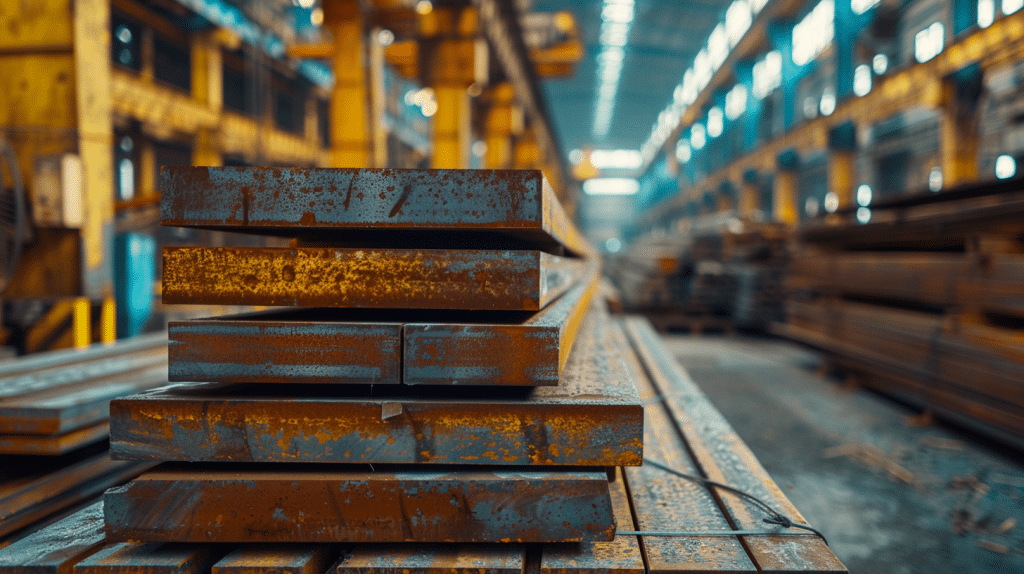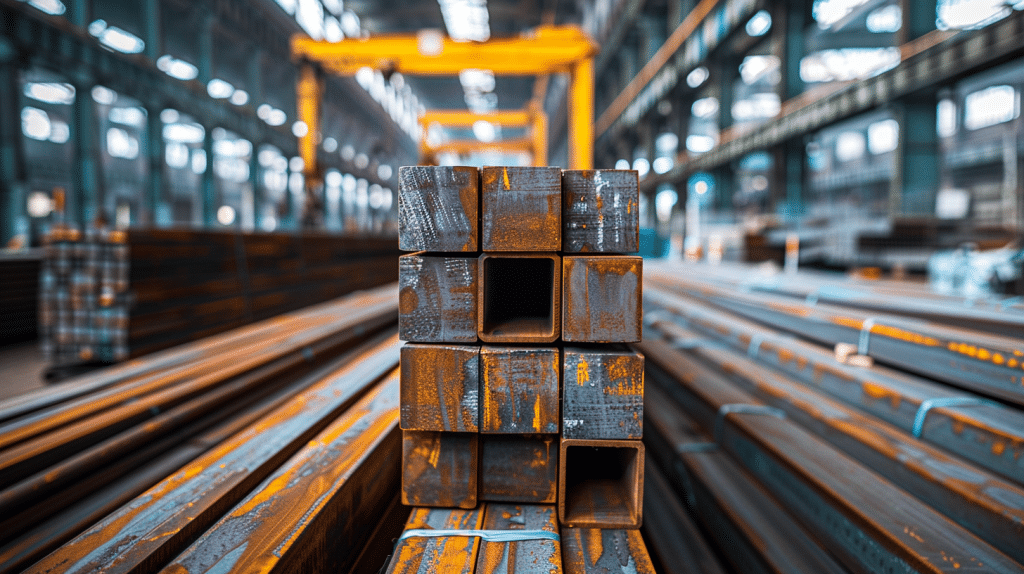Machinability of P20 tool steel, a pre-hardened mold steel widely used in the plastic injection molding and die casting industries, is a critical factor that affects manufacturing efficiency and mold quality. This article provides a comprehensive analysis of the machinability aspects of P20 steel, including factors influencing its machinability, techniques for effective machining, and strategies to optimize tool life and surface finish. The emphasis is on delivering insights that aid manufacturing professionals in understanding how to efficiently machine P20 steel while maintaining high standards of quality and productivity.

Machinability of P20 Steel
In its prehardened state, P20 steel boasts a machinability rating of 65, which is assessed in comparison to the baseline rating of 100 designated for a 1 percent carbon tool steel. This rating essentially quantifies the ease with which the steel can be machined, indicating that P20, while not as easily machinable as the benchmark tool steel, still offers a reasonable level of workability for various manufacturing and tooling applications.
In terms of dimensional stability, a critical aspect for any tool steel, P20 demonstrates commendable performance. Specifically, when it undergoes an oil quenching process from a hardening temperature set at 1550°F, P20 steel typically exhibits a minimal dimensional expansion of 0.003 inches per inch. This expansion rate is a crucial parameter for engineers and machinists, as it provides insight into the potential size changes and tolerances that can be expected during and after the heat treatment process. Managing such changes is essential for ensuring the precision and accuracy of the final machined components.
Composition of P20 Steel
P20 steel stands out in the realm of mold making materials, predominantly due to its unique composition that offers a balance between durability and ease of machining. This steel is categorized as a low-alloy tool steel and its chemical makeup is pivotal for its characteristic properties.
The primary constituents of P20 steel include carbon (C), chromium (Cr), molybdenum (Mo), and nickel (Ni). The carbon content in P20 ranges from 0.28% to 0.40%, which influences the steel’s hardness and strength. Chromium is present in proportions of approximately 1.40% to 2.00%, enhancing the material’s resistance to wear and corrosion, an essential trait for molds exposed to harsh processing environments.
Furthermore, molybdenum, constituting about 0.30% to 0.55%, plays a crucial role in refining the steel’s grain structure, thereby improving toughness and weldability. Nickel adds another layer of robustness by comprising around 0.85% to 1.15% of the alloy. This addition significantly improves the toughness and ductility of P20 steel, which is beneficial during machining processes that require material flexibility without cracking.
In addition to these main components, P20 steel may contain minor amounts of manganese, silicon, phosphorus, and sulfur. Each of these elements contributes subtly yet significantly to the overall performance of P20 steel in various industrial applications. Manganese and silicon assist in deoxidation during the steelmaking process and enhance tensile strength while keeping brittleness at bay.
Mechanical Properties of P20 Steel
P20 steel is renowned for its balanced combination of strength, toughness, and wear resistance which is primarily due to its chemical composition. This tool steel is often used in mold making due to these desirable mechanical properties.
The tensile strength of P20 steel ranges significantly, usually found between 850-1000 MPa. This range highlights the material’s capability to withstand substantial force before failure. The durability under tensile stress makes it a suitable candidate for various manufacturing processes that involve high pressures and stresses.
Additionally, the yield strength of P20 steel tends to sit around 800 MPa. Yield strength signifies the point at which the material begins to deform plastically – meaning it will not return to its original shape if the stress causing deformation is removed. Having a high yield strength indicates that P20 steel maintains its shape under extensive use and stress.
Elongation at break is another critical property, showcasing how much a material can stretch before breaking. For P20 steel, this usually lies in the vicinity of 17-22%. Such ductility allows it to undergo shaping and molding processes without fracturing prematurely.
The hardness of pre-hardened P20 steel generally falls within the range of 28-32 HRC (Rockwell Hardness), making it hard enough to resist wear yet still machinable with proper tooling strategies. This balance ensures that products made from P20 steel can last longer even in demanding conditions.
Impact resistance pertains to a material’s ability to absorb energy during deformation without cracking. P20’s charpy impact value provides insight into its toughness – particularly important in applications where sudden impacts or shock loads may occur.
Lastly, thermal conductivity plays a role in how well the material can dissipate heat generated during machining operations. Proper heat dissipation is crucial in maintaining structural integrity and preventing thermal damage.
Pre-hardened State of P20 Steel
A critical aspect of P20 steel that significantly influences these properties is its pre-hardened state. This characteristic not only sets it apart from other tool steels but also plays a pivotal role in its applicability in various industrial processes.
The pre-hardened state refers to the condition of the steel after it has undergone initial heat treatment by the manufacturer but before any machining or additional processing by the end-user. For P20 steel, this treatment typically brings its hardness to about 300 to 350 Brinell hardness number (BHN). It’s worth noting that this level of hardness strikes a balance between ease of machining and sufficient wear resistance for many tooling applications.
One of the chief benefits of the pre-hardened state is that it eliminates the need for further heat treatments by the end-user, which can be both time-consuming and costly. This feature allows fabricators to proceed directly with their machining processes without concerns about significant dimensional changes due to heat treatment. Consequently, manufacturers can maintain tighter tolerances and achieve more predictable outcomes in their finished products.
Moreover, because P20 steel in its pre-hardened state offers a relatively uniform hardness throughout the material, inconsistencies during machining are minimized. This homogeneity ensures that tool wear is more even, potentially extending the lifespan of cutting tools used on P20 workpieces. Additionally, the risk of cracking during machining is reduced, further enhancing process reliability.
The pre-hardening process also imparts improved stress-relief characteristics to P20 steel. Such traits are invaluable when fabricating complex shapes or components that could otherwise be prone to warping or distortion due to internal stresses introduced during machining operations.

Machining Aspects of P20 Steel
Cutting Speed
When machining P20 steel, selecting the optimal cutting speed is fundamental for overall success without inducing excess tool wear or undesirable surface finishes. Cutting speed directly impacts both tool life and the quality of the machined surface, requiring a balanced approach to maximize efficiency and outcomes. Typically, moderate to high speeds can be utilized provided that they are adjusted according to the specific hardness of the P20 steel being worked on.
Tool Wear
Tool Wear in the context of machining P20 steel highlights the need for careful monitoring and management. The nature of this material means tools can undergo rapid wear if inappropriate conditions or parameters are selected. Factors influencing wear include cutting speed, feed rate, tool material, and coolant application. To prolong tool life, it’s advisable to choose materials such as carbide or ceramics for the cutting tools due to their higher resistance to abrasion when compared to high-speed steel tools.
Surface Finish
Achieving an optimal surface finish when machining P20 steel lies in understanding both machine settings and tool condition. A fine surface finish requires precise control over machining parameters such as cutting speed, feed rate, and depth of cut. Additionally, maintaining a sharp tool edge is paramount as any deterioration here could lead to increased roughness on the finished workpiece. Utilizing appropriate lubrication also aids in improving surface finish by reducing friction and consequently heat generation during machining operations.
Tooling Considerations for Machining P20 Steel
Tool Material
When selecting tool material for machining P20 steel, high-speed steel (HSS) and carbide tools are predominantly used. Carbide tools, known for their hardness and resistance to wear, are highly recommended due to their ability to maintain edge sharpness and withstand the heat generated during cutting operations. This characteristic is particularly beneficial for maintaining precision in dimensions and minimizing tool wear over time. However, in situations where flexibility is required or when cost considerations come into play, HSS tools can be a viable alternative. Despite being less durable under high temperatures compared to carbides, HSS tools offer easier reshaping and sharpening, making them suitable for specific applications with P20 steel.
Coolant Use
The application of appropriate coolants plays a crucial role in the successful machining of P20 steel. Coolants contribute significantly to preventing overheating of both the workpiece and the tool, thereby reducing the potential for thermal damage and improving tool life. Furthermore, they assist in flushing away chips from the cutting zone, which is essential for maintaining an unobstructed cutting path and achieving a superior surface finish.
For optimal results, the use of coolants should be carefully considered based on the machining operation being performed. Water-based coolants are commonly used due to their excellent cooling properties and ease of handling. However, oil-based coolants can provide better lubrication, extending tool life further and facilitating smoother cuts. In specific cases where environmental or cleanup concerns are paramount, air or mist cooling systems may offer a suitable alternative, though they might not deliver the same level of cooling performance as liquid coolants.
Machining Operations (Milling and Drilling, Turning and Grinding)
Milling and Drilling
Milling and drilling operations play a crucial role in machining P20 steel, a commonly used tool steel. During milling, the material is removed by rotating tools with multiple cutting edges. These operations require precise selection of cutting parameters to efficiently machine P20 steel without compromising its integrity or inducing undue stress. In drilling, issues such as chip removal and heat build-up need careful management. The use of high-speed steel (HSS) drills or carbide drills can enhance efficiency, providing clean holes with tight tolerances.
Turning and Grinding
Turning involves removing material from the external or internal surface of the workpiece by a cutting tool while it rotates. For P20 steel, which is pre-hardened, turning demands tools capable of handling its hardness while ensuring smooth finishes. Diamond-tipped or carbide inserts are often recommended for achieving optimal results. Grinding, on the other hand, uses an abrasive wheel to achieve fine surface finishes and accurate dimensions on P20 steel parts. Both cylindrical grinding – for external surfaces – and surface grinding – for flat surfaces – are utilized depending on the desired outcome.
Chip formation during these processes should be controlled through appropriate speeds and feeds, along with adequate cooling methods to prevent work hardening and thermal expansion that could affect dimensional accuracy. The selection of suitable lubricants also plays a vital role in enhancing the machinability of P20 steel during these operations. Challenges such as ensuring consistent surface finish quality and managing tool wear demand attention to detail in operation settings and tooling choices.
Challenges and Solutions: Work Hardening, Thermal Stability
P20 steel is known for its versatility and strength, making it a popular choice in various manufacturing sectors. However, during the machining process, certain challenges such as work hardening and thermal stability can arise. Understanding these challenges and implementing strategic solutions is vital for achieving optimal results.
Work Hardening
Work hardening occurs when P20 steel becomes harder and more resistant to wear as it undergoes deformation during machining. This phenomenon can lead to difficulty in subsequent machining processes and increased tool wear. To mitigate work hardening, it’s advisable to employ low cutting speeds and high feed rates. This approach minimizes the heat generated during machining, reducing the extent of work hardening. Additionally, using tools coated with materials like titanium nitride (TiN) can enhance their lifespan by providing a barrier against the hardened steel surface.
Thermal Stability
Thermal stability refers to P20 steel’s ability to retain its properties at high temperatures generated during machining operations. The heat can cause dimensional inaccuracies and affect the overall quality of the finished product. To address this issue, choosing cutting tools that offer high thermal stability is crucial. Carbide tools are often recommended due to their ability to withstand high temperatures without losing their hardness or shape.
Furthermore, applying coolants effectively dissipates heat from both the tool and workpiece surfaces, maintaining thermal stability throughout the machining process. Coolants not only assist in controlling temperature but also lubricate the cutting area, reducing friction and further preventing thermal-induced damages.
Practical Tips: Lubrication and Cooling, Speeds and Feeds Adjustment
Lubrication and cooling are pivotal in machining P20 steel to mitigate tool wear and optimize surface finish. Efficient lubrication minimizes friction between the tool and workpiece, extending tool life and enhancing production efficiency. For P20 steel, using a high-quality cutting fluid can provide excellent thermal conductivity, ensuring that heat is effectively removed from the cutting zone. This practice not only prevents premature tool failure but also contributes to achieving a superior surface finish by reducing thermal deformation of the workpiece.
Adjusting speeds and feeds appropriately is critical when machining P20 steel to balance productivity with tool life. The selection of cutting speed affects both the quality of the finished product and the longevity of the cutting tool. A speed too high may lead to excessive heat buildup, resulting in tool deterioration, while a speed too low can cause inadequate chip removal and increased tool engagement time, which might lead to work hardening of the material. Hence, determining the optimal cutting speed requires understanding the specific machining operation and considering factors such as tool material, coating, and geometry.
Similarly, feed rate adjustments are essential for controlling chip thickness and preventing built-up edge on the cutting tool. Proper management of feeds helps in maintaining desired surface roughness levels and ensures efficient machining without compromising tool integrity or part quality. For P20 steel, employing a feed rate that promotes steady chip formation without inducing undue stress on the tool will contribute significantly to successful machining outcomes.
Applying these practical tips concerning lubrication, cooling, speeds, and feeds adjustment can profoundly impact machining efficacy when working with P20 steel. These measures not only enhance the machinability of this already versatile material but also contribute substantially to improving overall manufacturing processes’ cost-effectiveness and reliability.
In Conclusion
In summary, the machinability of P20 steel is significantly influenced by its unique chemical composition and heat treatment processes, which enable it to maintain a balance between hardness and ductility, optimizing it for various tooling applications.
To further explore the intricacies of P20 steel’s machinability and how it can enhance your manufacturing outcomes, we invite you to contact our team for a more detailed discussion. Let us help you navigate the benefits of incorporating P20 steel into your next project for superior performance and efficiency.
